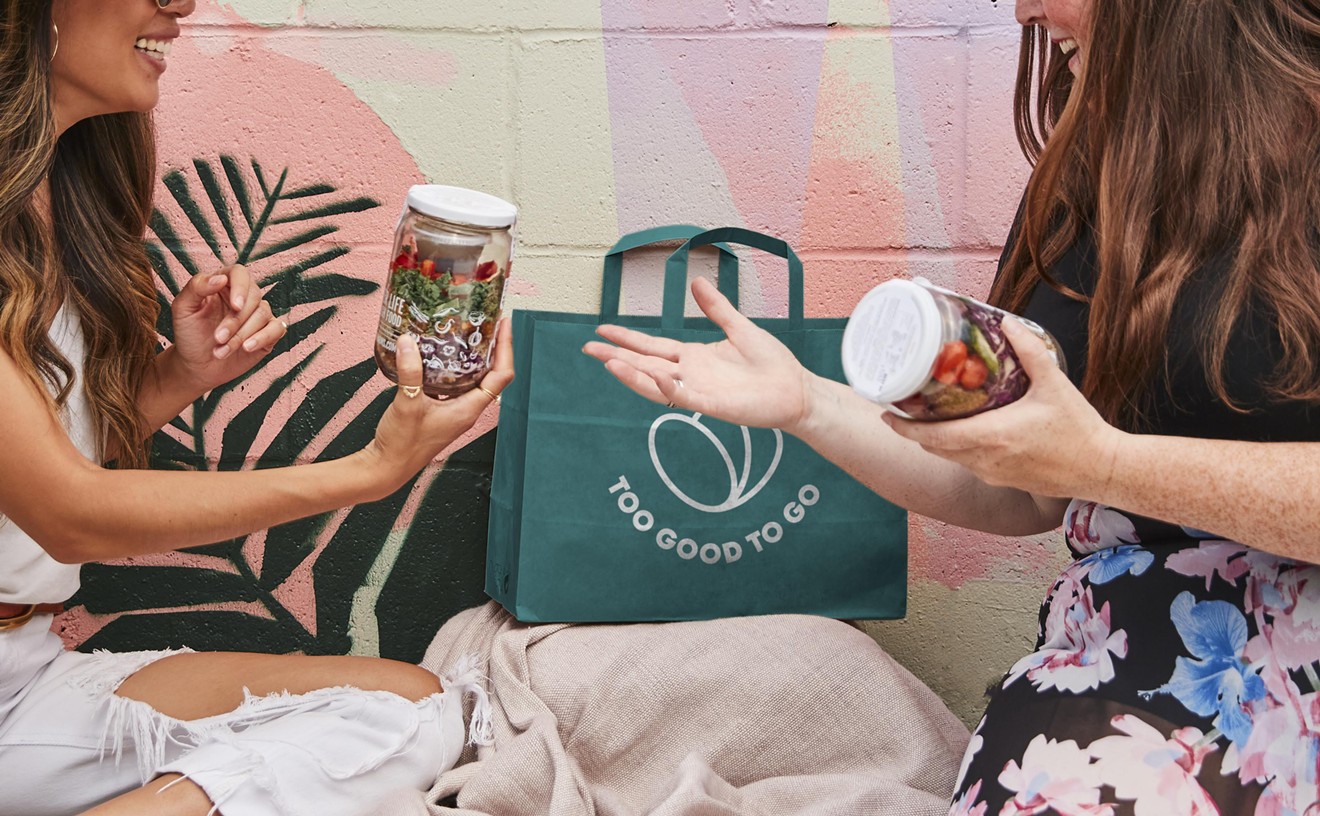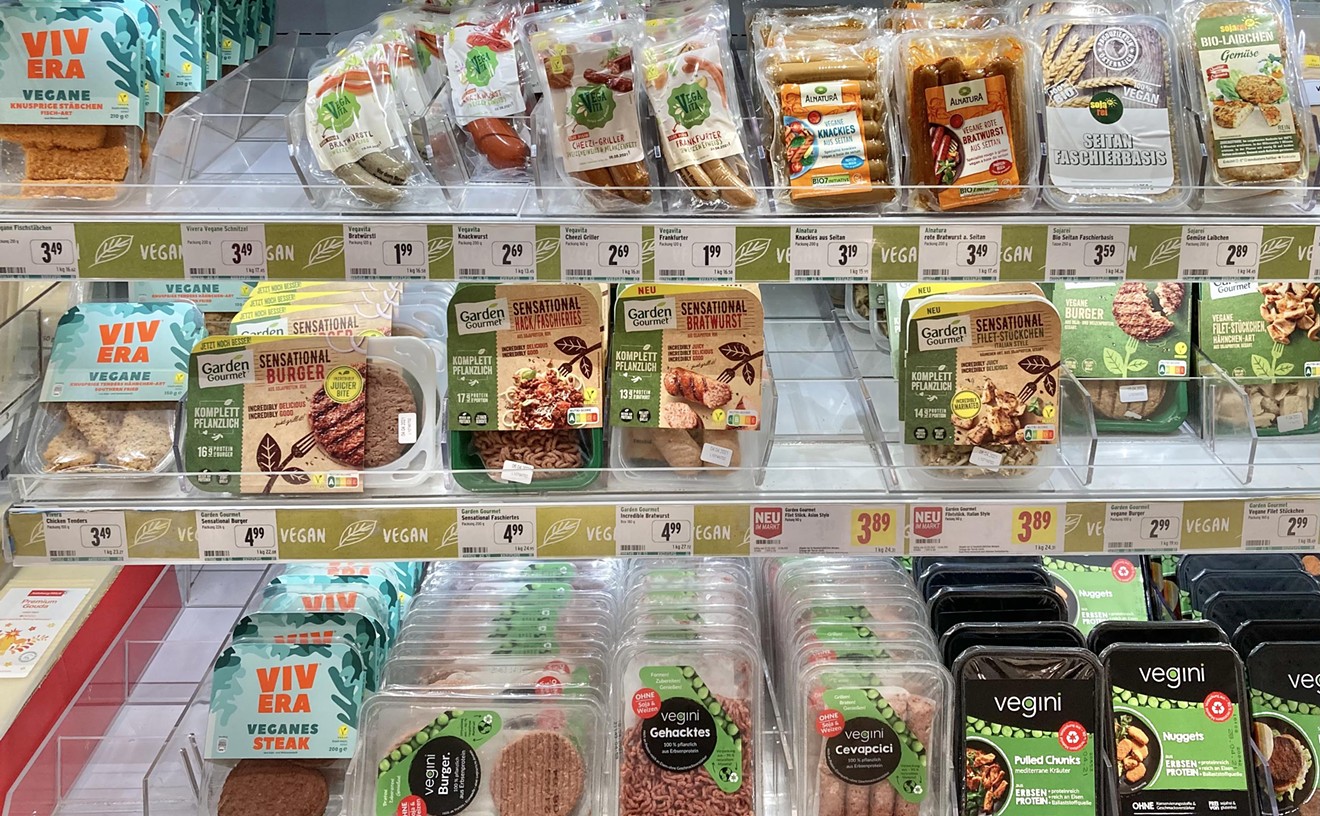Here at Chow Bella, we try to follow food trends as they pop up. So when we started seeing little peanut-sized lumps of cheese at farmers' markets and groceries around town, we figured it was time to stop and find out how and why they're made.
If you're from the Midwest (especially Wisconsin), cheese curds are likely a throwback to childhood. Apparently, they're a popular snack food. Dairy farms are plentiful there, so that's no big surprise. What is a surprise -- at least the first time you pop one in your mouth -- is that cheese curds squeak. Yes, food that squeaks. Awesome!
The question is, why do cheese curds squeak when you eat them? And what the heck are they made of, anyway? We popped by Tempe's Milk n' More Store at the United Dairymen of Arizona processing plant on Broadway and Hardy to find out.
Cheese curd sales manager Noel Byrne of the United Dairyman of Arizona took us on a brief tour of the store and the cheese packing room in back. Their dairy plant sells milk to Shamrock Farms and other local dairy brands. Because they produce 40% more milk than needed, the co-op decided to open up a cheese plant to use the extra supply.
So how do cheese curds start? "If you see a bottle of milk, it's separated by Mother Nature. Cream rises to the top, and the bottom is the whey. It's the same thing in the cheese process," says Byrne. "You add rennet to milk, start a process and let Mother Nature go on a course -- when we want it, not when she wants it."
The milk is processed in 7,000-gallon vats and the rennet added to turn the mixture into cheese. One vat yields 700 pounds of cheese. Think of it...that could supply the Chow Bella team for life! Or at least a year or two.
Back to the cheese curds. After the milk in the vat starts to solidify, they rake through it to gather the cheese. Then, the cheese is cut with a special tool called a harp (because it has strings that can be plucked) and packaged in little bite-sized morsels. "This is a fresh product. It was milk this morning," Byrne explained. "People like the freshness. It's a cleaner taste because the proteins haven't had a chance to age out."
Plus, as we pointed out, they squeak. Which makes them just plain fun to eat. When you chew fresh cheese curds, they squeak because all of the air hasn't been compressed out.
What kind of cheese are cheese curds made of? Our personal favorite, cheddar. "The difference between this and the cheddar that you buy in the store in blocks is that the blocks are an aged product," says Byrne. "You take it and store it away for 90 days, 120 days, 2 years. The longer you keep it, the sharper it gets."
That doesn't mean you should open up your bag of fresh curds and leave 'em. Once you open the bag, it starts a countdown. The product is best in the first few days. After that, you'll notice a texture change. To refresh them, zap your cheese curds in the microwave for 7-8 seconds. "If you keep it in your refrigerator unopened, it'll age out to regular cheddar," our host explains.
We brought home a bag and there was no microwaving necessary. The curds were gone in a day. They're great as-is, especially since the Dairymen make them in flavors like jalapeno, black pepper and Cajun. They're especially useful for cooking. The texture is long and stringy when it melts, like mozzarella. According to one Milk n' More employee, cheese curds are ideal for use in enchiladas and breakfast burritos.
We'll have to try that next time, if we can get the bag to last long enough. You can purchase Arizona Cheese Co. cheese curds at the Milk n' More Store (fresh every Thursday!), Downtown Phoenix Public Market, Superstition Ranch Markets in Mesa and at various farmers' markets.










